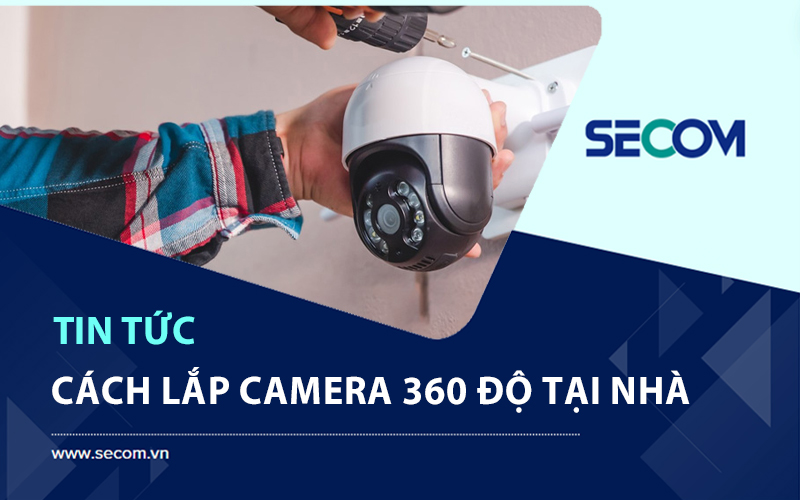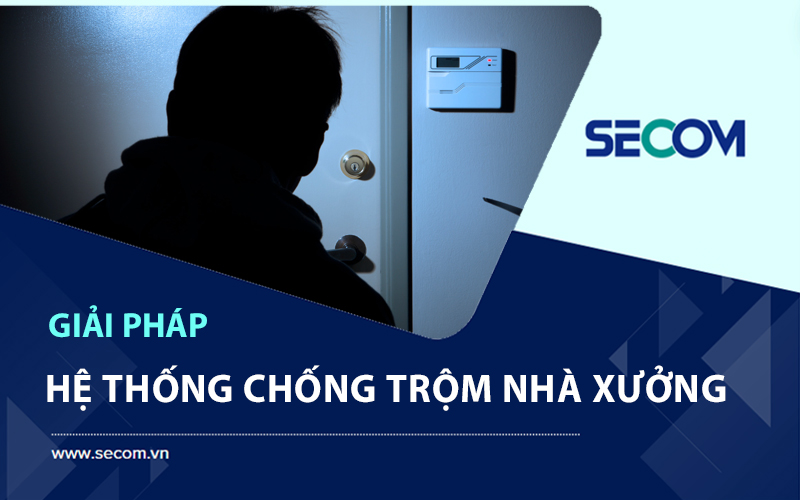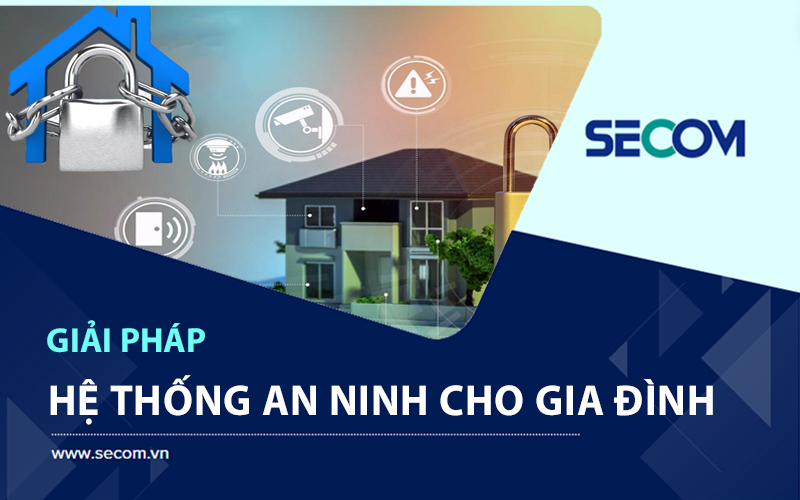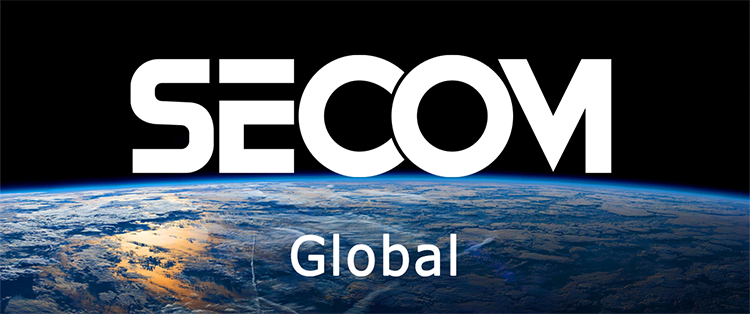- SECOM Tips
- Sep. 17, 2024
What is a Dome Camera? Should You Install a Dome Camera?
The Dome Camera is one of the most popular types of surveillance cameras today, known for its compact design and flexible features. Widely used in security systems, Dome Cameras not only ensure effective monitoring but also add aesthetic value to the installation space. In this article, SECOM will help you better understand what a Dome Camera is, as well as the features and applications of this product line.
What is a Dome Camera?
A Dome Camera is a type of surveillance camera commonly used for indoor security monitoring, thanks to its compact design, aesthetics, and flexible installation on ceilings or walls. Also known as a ceiling-mounted camera or semi-sphere camera, it features a distinctive design resembling a dome or semi-sphere. The camera body is housed inside a protective dome, typically made of plastic or clear glass, which shields the internal components from dust, weather, and external impacts.
Key Features of a Dome Camera
The Dome Camera stands out for several unique design and functional characteristics, making it a popular choice in modern security systems. Some of its strengths include:
- Unique Design: The dome-shaped casing of the camera not only offers a distinctive design but also allows it to blend seamlessly into the surroundings. This design makes the camera less noticeable, facilitating discreet surveillance without compromising the aesthetics of the space.
- High Durability: Built from sturdy materials and designed to be vandal-resistant, Dome Cameras can withstand impacts and external threats, making them ideal for high-risk areas.
- 24/7 Surveillance: Equipped with infrared LED lights, Dome Cameras can capture clear images even in low light or nighttime conditions, ensuring continuous monitoring.
- Weather Resistance: The protective casing is designed to withstand harsh weather conditions, ensuring stable operation and long-lasting performance.
- Flexible Installation: With the ability to be mounted on the ceiling or wall, the Dome Camera offers flexible installation options, making it suitable for various spaces and monitoring needs.
Outstanding Features of Dome Cameras
After learning what a Dome Camera is, SECOM introduces some of the standout features of this product line. In addition to its flexible design and high durability, Dome Cameras are equipped with many superior features to meet diverse surveillance needs:
- Day and Night Monitoring: Thanks to the integration of infrared technology, Dome Cameras can capture clear images even in low light or nighttime conditions, ensuring 24/7 continuous surveillance.
- Motion Detection: This feature allows the camera to automatically record and send notifications when motion is detected in the monitoring area, helping you quickly capture important events.
- Two-Way Audio: Some Dome Camera models are equipped with a microphone and speaker, allowing you to communicate directly with individuals in the monitored area, enhancing interaction and remote control capabilities.
- Backlight Compensation: With WDR (Wide Dynamic Range) technology, Dome Cameras handle complex lighting situations effectively, ensuring clear images even when there is significant light contrast between different areas of the frame.
- Cloud Storage: Many Dome Cameras support cloud data storage, allowing easy access and playback of footage from anywhere, while also ensuring data safety even if the camera is damaged or stolen.
Advantages and Disadvantages of Dome Cameras
Dome Cameras offer many outstanding advantages, but they also come with certain limitations. To provide an objective and comprehensive view, let’s compare the pros and cons of this type of camera:
| Advantages | Disadvantages |
| The discreet design makes it difficult to detect, making it ideal for covert surveillance. | Limited movement range compared to specialized PTZ cameras. |
| Vandal-resistant and tamper-proof, protecting the camera from external impacts. | Glare and reflections may affect image quality in certain lighting conditions. |
| Wide coverage angle, providing comprehensive observation of large areas. | More complex installation compared to other types of cameras. |
| Weather-resistant, making it suitable for outdoor use in harsh conditions. | Maintenance is challenging when installed in high or hard-to-reach locations. |
| Highly versatile, suitable for use in various environments. |
Popular Types of Dome Cameras on the Market Today
When choosing a Dome Camera for your surveillance system, it’s important to understand the different types available on the market. Each type of Dome Camera has its own features and functions suited to various needs and applications. Below are the most common types of Dome Cameras you can consider:
Analog Dome Camera
Analog Dome Cameras are traditional cameras that use analog signals to transmit images to a recorder. These cameras are typically used in basic security surveillance systems. Although they don’t offer the high image quality of modern IP or Wi-Fi Dome Cameras, Analog Dome Cameras remain a popular choice due to their affordability and reliable performance.
IP Dome Camera
For those seeking high image quality and flexible network connectivity, IP Dome Cameras are an ideal solution. These cameras use IP network technology to transmit image data, allowing integration into smart camera systems and remote monitoring via the internet. This makes IP Dome Cameras a popular choice in modern security systems, thanks to their sharp image quality and smart features.
Speed Dome Camera
A Speed Dome Camera is a type of camera capable of remote panning and zooming. It provides flexible viewing angle adjustments, making it ideal for smart surveillance systems in large or dynamic areas. With fast rotation and zoom capabilities, Speed Dome Cameras enable effective monitoring and quick responses to emergencies, with the ability to oversee security remotely.
Infrared Dome Camera
When night surveillance or monitoring in low-light conditions is needed, Infrared Dome Cameras are an excellent choice. These cameras can capture clear images even without light, thanks to the addition of infrared LED lights. This ensures continuous protection for high-security areas, whether it’s day or night.
What is the Difference Between a Speed Dome Camera and a Dome Camera?
When selecting a camera for a smart surveillance system, understanding the differences between camera types is essential to meet your specific needs. Both Dome Cameras and Speed Dome Cameras are popular options, but they serve different purposes and come with distinct features. To help you compare and make an informed choice, here is a detailed comparison between Dome Cameras and Speed Dome Cameras:
| Feature | Dome Camera | Speed Dome Camera (PTZ) |
| Installation Location | Indoors, under eaves outdoors | Outdoors, large indoor areas |
| Field of View | Fixed range (70° – 100°) | 360° horizontal rotation, 90° or 180° vertical tilt |
| Size | Smaller, around 4 inches | Larger, around 8 inches |
| Night Vision Range | Approximately 30 meters | Approximately 70 meters |
| Installation | More complex than bullet cameras | Easier, similar to bullet cameras |
| Camouflage Ability | Discreet, difficult to detect viewing direction | Less discreet due to larger size |
| Weather Resistance | Can have weather resistance if designed for it | Designed to withstand harsh weather |
| Ideal Application | Indoor monitoring with aesthetic focus | Monitoring large, open areas requiring flexible viewing |
Suitable Locations for Installing Dome Cameras
When installing Dome Cameras, selecting the right location is crucial to ensure effective surveillance and prolong the device’s lifespan. Dome Cameras are typically designed for indoor use or under eaves, as their environmental resistance is limited. Therefore, they are not ideal for outdoor areas exposed to dirt, rain, or strong sunlight, which could damage the device.
For indoor or under-eave installations, Dome Cameras can be mounted on walls or ceilings to optimize visibility and protect the equipment from environmental factors. Installing them in these locations also shields the camera from external threats, ensuring stable operation throughout its service life.
Applications of Dome Cameras in Daily Life
What is a Dome Camera, and how is it applied in daily life? Overall, Dome Cameras are highly versatile and can be installed in various locations, depending on the need and purpose of use, such as:
- Indoors: With a compact, aesthetic design that blends well with interior spaces, Dome Cameras are often installed in homes, stores, warehouses, cafes, offices, schools, and hospitals to monitor security, track activities, and ensure the safety of people and property.
- Outdoors: Some high-end Dome Cameras come with waterproof and dustproof features, allowing them to be installed outdoors in parking lots, factories, industrial zones, and construction sites to monitor security, manage activities, and control access.
- Aesthetic Areas: With a discreet and elegant design, Dome Cameras are an ideal choice for areas requiring high aesthetic standards, such as hotel lobbies, showrooms, and fashion stores.
Should You Install a Dome Camera?
Now that you understand what a Dome Camera is, should you install one? In fact, installing a Dome Camera can be an excellent choice if you need a discreet and effective surveillance solution for indoor spaces like homes, stores, or offices. With its inconspicuous design and wide monitoring coverage, the Dome Camera is well-suited for these areas.
However, if you need an outdoor camera or require flexible movement features, a Dome Camera might not be the best option. This type of camera can struggle with glare and reflection, and installation and maintenance can be more complicated.
Therefore, if you need a monitoring solution for indoor areas or spaces with mild environmental conditions, a Dome Camera is a reasonable choice. But if your requirements involve harsh environments or mobile features, you should consider other camera types, such as IP Cameras or Wi-Fi Cameras.
SECOM Vietnam – A Trusted Provider of Comprehensive Surveillance Camera Solutions
If you are looking for a reputable unit to advise and implement a surveillance camera system, SECOM Vietnam is a worthy option. With years of experience in the security field, SECOM offers comprehensive camera installation solutions to meet all customer needs.
- Professional Consultation: SECOM’s team of experts will conduct on-site surveys, listen to your needs, and recommend the best camera installation solutions based on your space’s characteristics and intended use.
- Diverse Product Selection: While SECOM does not provide or install specific camera products, they will assist you in choosing suitable products from reputable brands in the market, ensuring quality and effective monitoring.
- Professional Installation: SECOM’s experienced technicians will support the installation of the camera system quickly, accurately, and aesthetically, ensuring the system operates stably and efficiently.
- Advanced Technology: SECOM constantly updates the latest technology in the field of surveillance cameras, ensuring your system remains modern and effective.
With dedication and professionalism, SECOM Vietnam is committed to providing you with a reliable security camera system that meets all your needs and brings you complete peace of mind.
The article above has provided you with basic information about what Dome Cameras are, along with guidance on choosing the right type of camera. Hopefully, through this article, you now have a clearer understanding of this popular surveillance camera model and can make a suitable decision for your security monitoring needs. If you still have difficulty finding a suitable security solution for your space, contact SECOM for the best consultation and support!
















